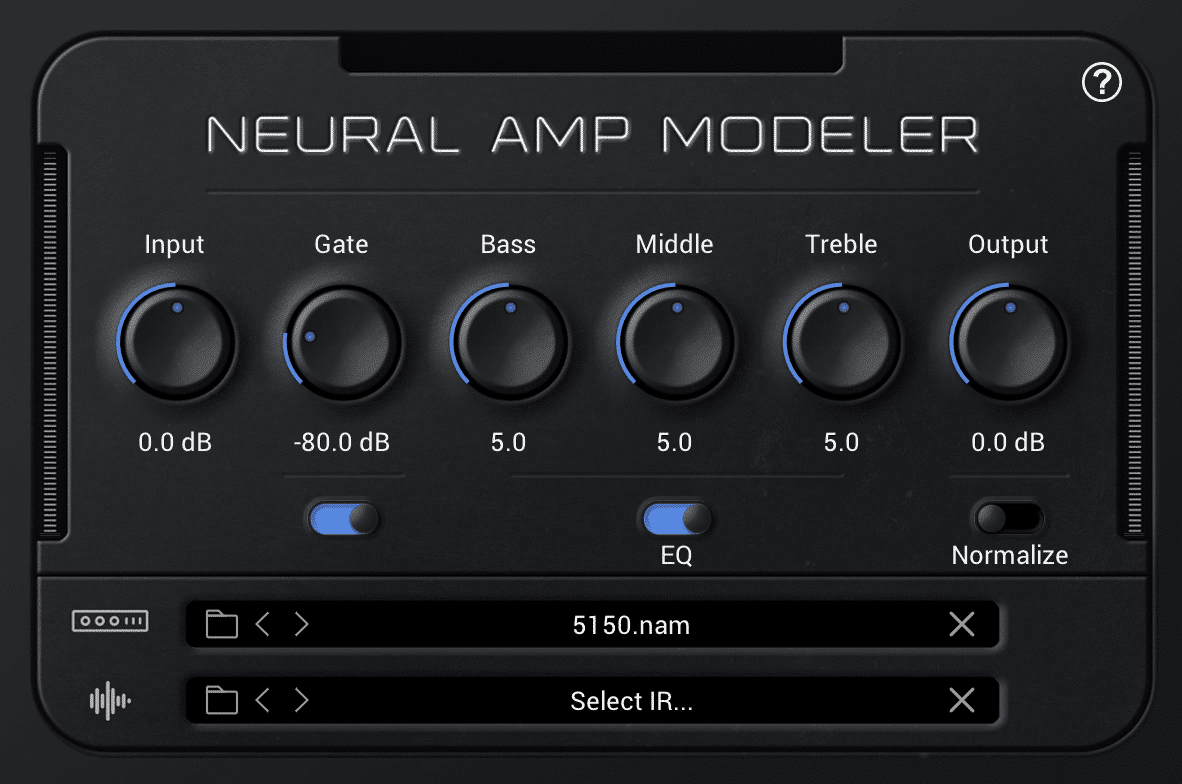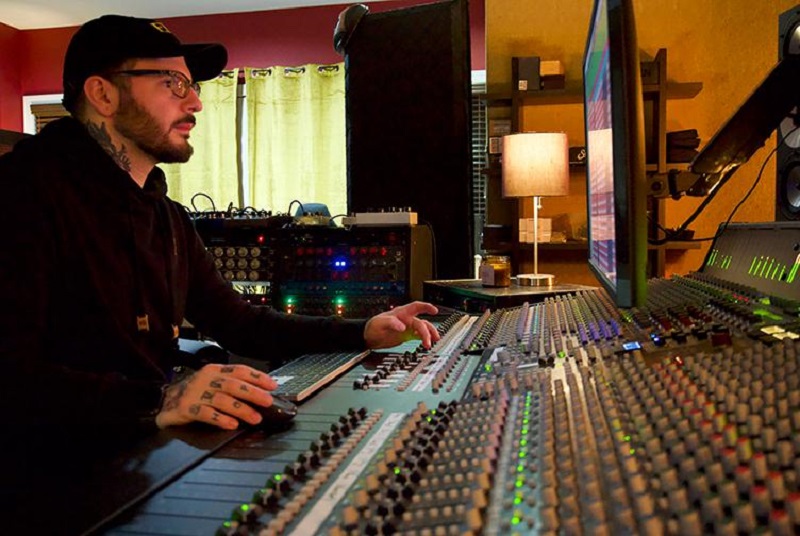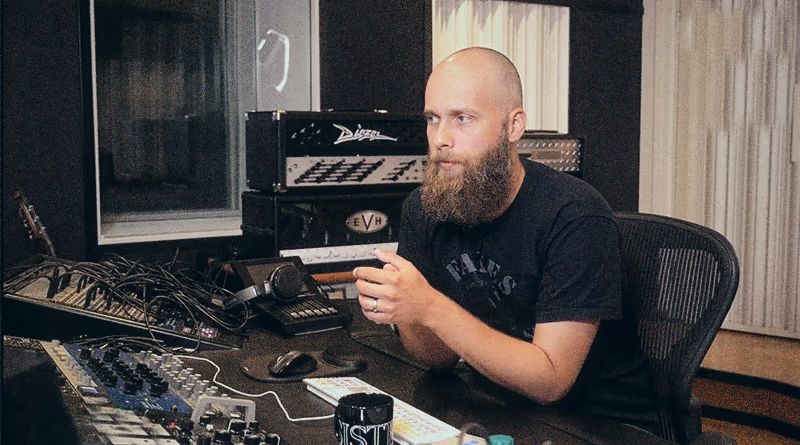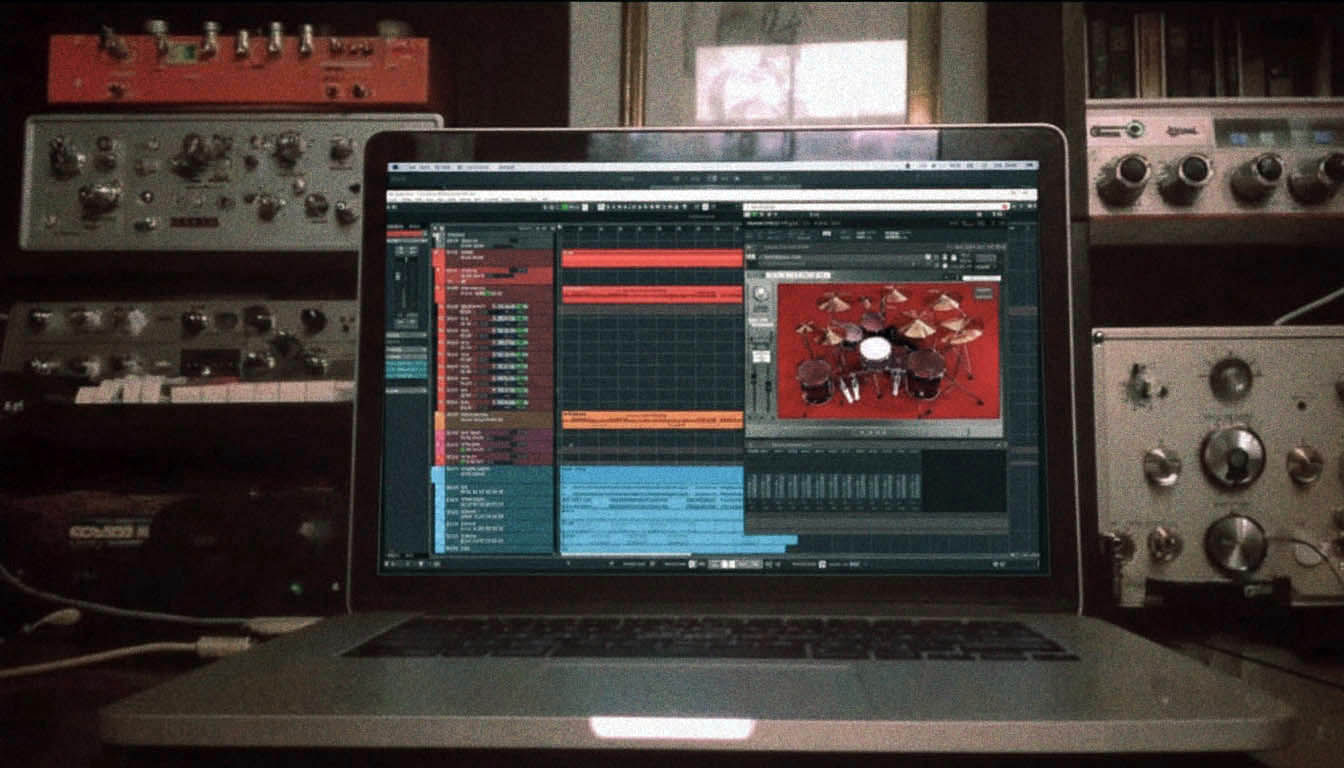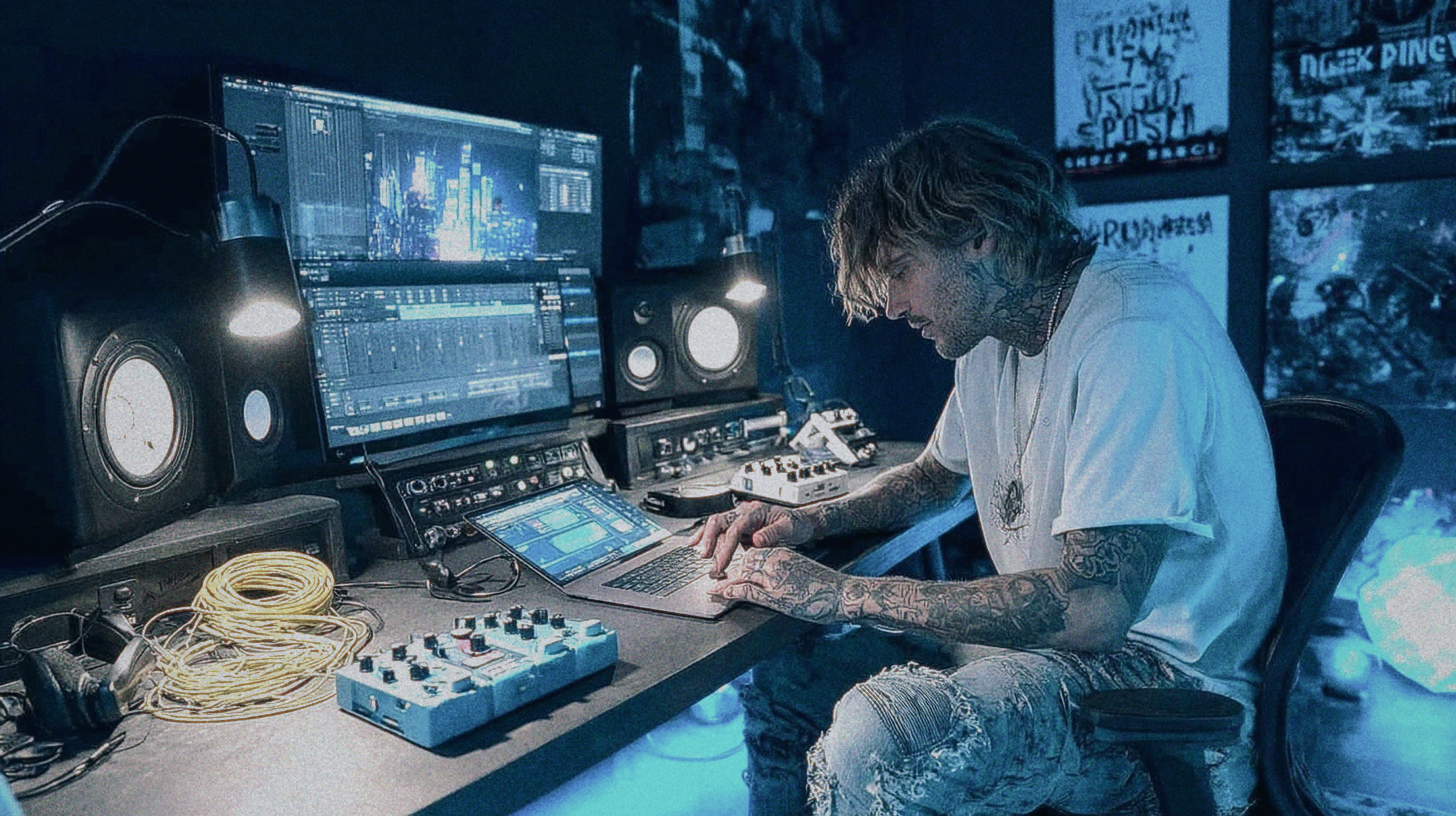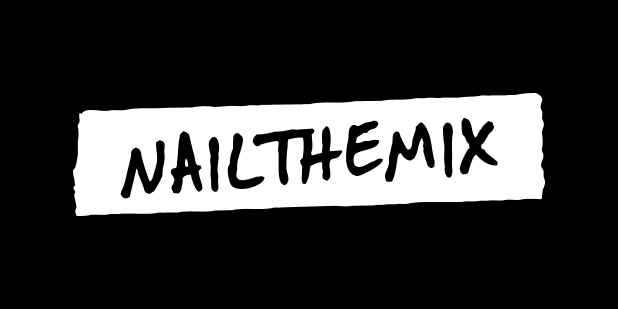
The Ultimate Guide to Modern Metal Guitar Plugins
Nail The Mix Staff
Getting a massive, mix-ready metal guitar tone entirely in the box is the modern standard. But let’s be real: staring at a folder full of guitar plugins can feel like being lost in a forest. Which amp sim? Which cab? Do I need a boost? It’s easy to end up with a tone that’s fizzy, thin, or just… digital.
If you think “digital” and “sterile” are the same thing, you might be judging today’s tools by yesterday’s standards. The guitar plugins available now are light-years ahead of the early modelers from 15-20 years ago. The problem isn’t the tech; it’s knowing how to use it.
This guide will break down the essential guitar plugins you need, give you pro and free options for each, and show you how to chain them together to craft a tone that’s tight, aggressive, and ready for a modern metal mix.
The Mindset: It’s Not Just About Low Tunings
Before we even open a plugin, let’s get one thing straight. Modern metal guitar isn’t defined by just drop G tuning or playing open-string chugs. That’s a surface-level take.
The real essence of modern metal is about pushing boundaries. It’s about next-level rhythmic precision, harmonic sophistication, and leveraging technology to achieve a level of tightness and clarity that was once impossible. The best modern players use technology not as a crutch, but as a tool to sharpen their skills and execute their vision perfectly.
Think of these plugins as the high-performance engine for your playing. The better the driver, the better the result.
The Holy Trinity: Your Modern Guitar Plugin Chain
Forget randomly stacking plugins. A killer digital guitar tone almost always follows a three-part signal chain that mimics a real-world analog rig. Get this right, and you’re 90% of the way there.
The Chain: Boost Pedal -> Amp Sim -> IR Loader (Cab Sim)
Let’s break down each piece.
Step 1: The Boost (The Tightness Pedal)
This is your secret weapon for a tight, articulate, and aggressive rhythm tone. A common mistake is thinking a boost pedal is just for adding more gain. For modern metal, it’s the opposite. We use it to shape the signal before it hits the amp.
Typically, you’ll set the pedal’s Drive to 0 or very low, its Tone knob to taste (often around noon), and crank the Level/Volume to 10. This does two crucial things:
- Tightens the Low End: It cuts flubby bass frequencies, preventing your chugs from turning into mud.
- Adds Mid-Range Punch: It focuses the mid-range in a way that helps your picking attack cut through the amp’s saturation.
The classic choice here is a Tube Screamer (TS808 or TS9), and most digital boosts are based on this circuit.
Paid Options:
- Fortin Grind: A modern classic. It’s more than a boost; it’s a high-gain tone-shaping tool designed specifically for down-tuned, aggressive metal.
- Neural DSP Amp Sims: Almost every Neural DSP suite (like Archetype: Gojira or Archetype: Petrucci) comes with a perfectly matched set of pre-effects, including one or more killer boost pedals.
- STL AmpHub: Amp hub comes with lots of boost pedals that are great for high gain, but low gain too.
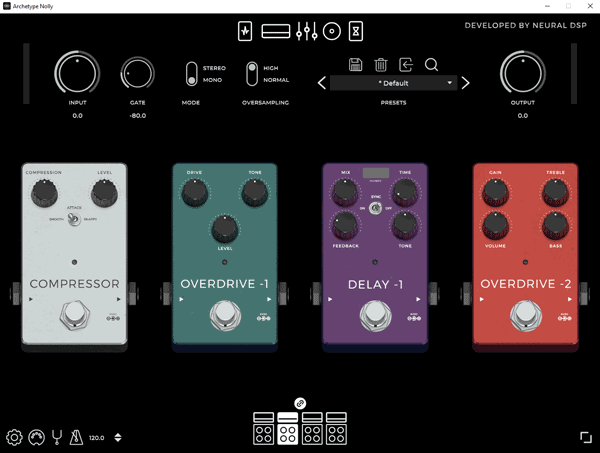
Free Options:
- TSE Audio TSE 808: A fantastic, no-nonsense digital recreation of the legendary Ibanez TS808. It does the job perfectly.
- Ignite Amps TSB-1 Tyrant Screamer: Another excellent and free Tube Screamer emulation with a few extra tone-shaping controls.
Step 2: The Amp Sim (The Core of Your Tone)
This is the heart of your rig—the plugin that emulates the amp head. This is where your gain, core EQ, and overall character come from. Most modern metal tones are built on the sound of a few legendary high-gain amps.
- The 5150/6505: The undisputed king of modern metal. Known for its aggressive, mid-forward bite and tight low end.
- The Dual Rectifier: Famous for its scooped, saturated, and huge-sounding rhythm tones.
- The JCM800 (Modded): The sound of classic thrash, often “hot-rodded” for more gain and aggression.
All-in-One Suites (The Big Guns):
- Neural DSP: They’ve set the industry standard for a reason. Their all-in-one suites are immaculate, providing not just amps but a complete, perfectly curated signal chain. The Archetype: Gojira is a beast for heavy, articulate tones, while the Fortin Nameless Suite delivers pure, unadulterated aggression.
- STL Tones (ToneHub & Amphub): A massive library of amps and producer-crafted presets. Want to sound like Howard Benson or Will Putney? Load their chain and go.
- Joey Sturgis Tones (JST): The Toneforge series, like the Misha Mansoor or Jason Richardson models, are specifically designed for the modern progressive metal sound.
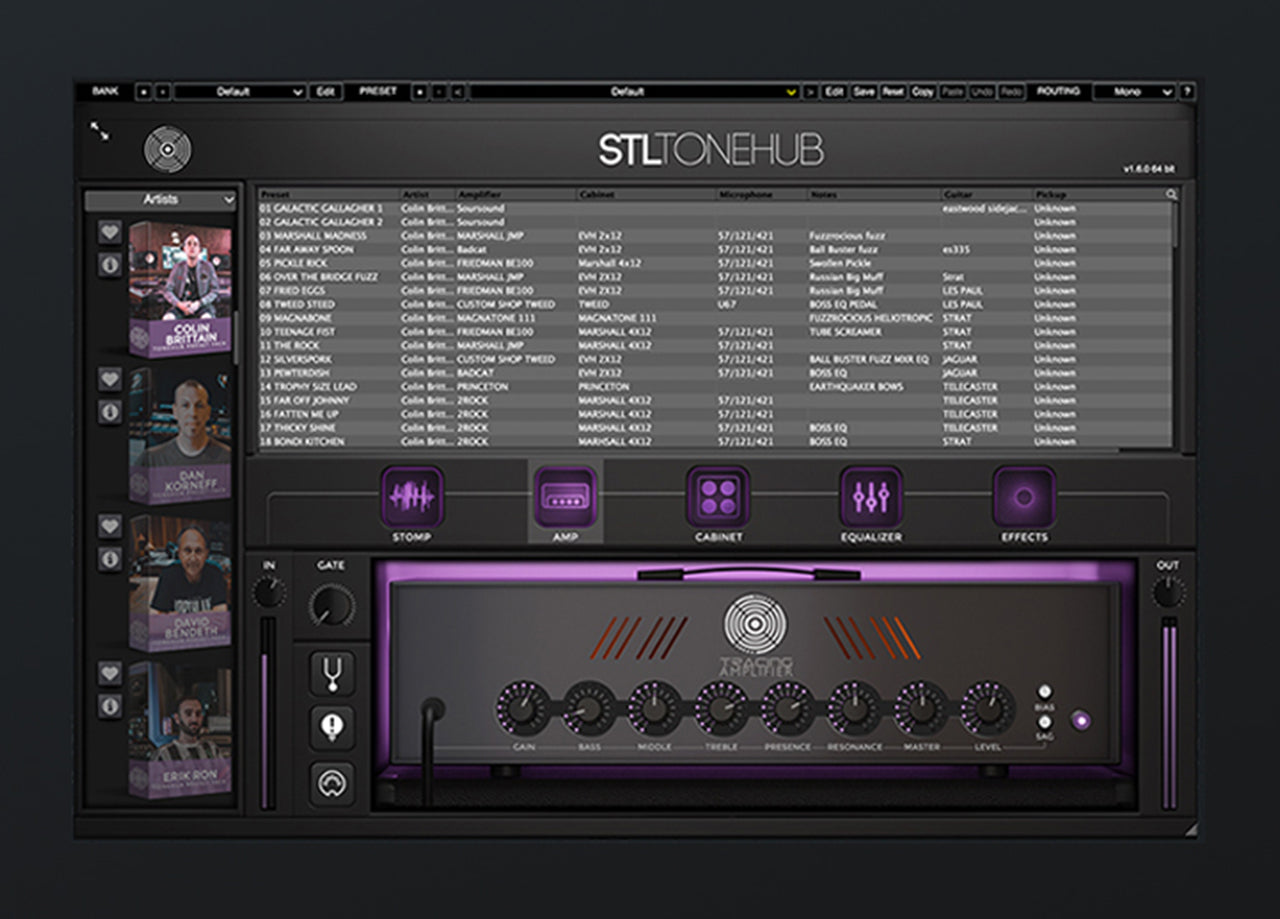
Free Options (Seriously Good Freebies):
- Ignite Amps Emissary: This free amp sim is a monster. It’s a custom-designed high-gain head that can easily compete with paid options. It’s a must-have.
- NAM (Neural Amp Modeler): A game-changer. NAM is a free player that runs “captures” of real amps. The community has captured thousands of amps, meaning you can get stunningly realistic tones for free—you just have to find the right captures.
- LePou Plugins: These are classics in the freeware world. The Lecto (Rectifier), Legion, and Hybrit (Marshall) are still totally usable today.
Step 3: The IR Loader (Where Tone Meets Reality)
This is the most critical and often misunderstood part of the chain. A great amp sim with a bad cabinet simulation will sound awful.
An Impulse Response (IR) is a sonic snapshot of a speaker cabinet being recorded with a specific microphone in a specific room. It captures the sound of the speaker, the mic’s frequency response, and the mic’s position. This is what makes your digital tone sound like a real, cranked amp in a room.
Most modern amp suites come with excellent built-in cabinet sections with movable mics and multiple IRs. But if you’re using a standalone amp sim, you’ll need a separate IR loader plugin.
Free IR Loader Plugins:
- Ignite Amps NadIR: The go-to free IR loader. It lets you load two IRs at once and blend them, which is the key to a complex, full-bodied tone.
- Lancaster Audio Pulse: Another simple, effective, and free IR loader.
Must-Have IR Packs (The Actual Sounds):
The loader is just the player; the IR files are the actual tones. Investing in a good IR pack is the single best thing you can do for your guitar sound.
- Companies to check out: OwnHammer, York Audio, Celestion, ML Sound Lab, Bogren Digital.
- A Classic Combo: Try blending two IRs. For example, grab an IR of a Mesa/Boogie 4×12 cab with Celestion Vintage 30 speakers. Load an IR of it mic’d with a Shure SM57 (for midrange bite and attack) and another of it mic’d with a Royer R-121 (for low-end body and warmth). Pan them slightly left and right in your IR loader, and adjust the balance to taste. This single technique will make your tones sound infinitely bigger.
Post-Processing: Carving Your Space in the Mix
Got your raw tone dialed in? Awesome. Now you need to make it sit in a dense metal mix. This usually involves some simple but crucial EQ moves.
Surgical EQ for Clarity
Don’t use the amp’s EQ knobs for this. Use a dedicated parametric EQ plugin after your IR loader for surgical adjustments.
- High-Pass Filter (HPF): Cut everything below 80-120Hz. This removes useless low-end rumble that just muddies up your mix and fights with the bass guitar.
- Low-Pass Filter (LPF): Cut everything above 8-12kHz. This is how you tame that harsh digital “fizz.” It cleans up the tone without making it sound dull.
- Scoop the Mud: Find the “boxy” or “muddy” frequencies, usually somewhere between 250Hz and 500Hz, and make a narrow cut. This cleans up the low-mids and makes room for the snare and vocals.
Light Compression for Glue
High-gain guitars are already naturally compressed from the amp’s distortion, so you don’t need to smash them. However, putting a compressor on your main guitar bus (where all your rhythm tracks are sent) can help “glue” them together. Use a slow attack and fast release with just 1-2 dB of gain reduction to make your quad-tracked guitars feel like one cohesive wall of sound.
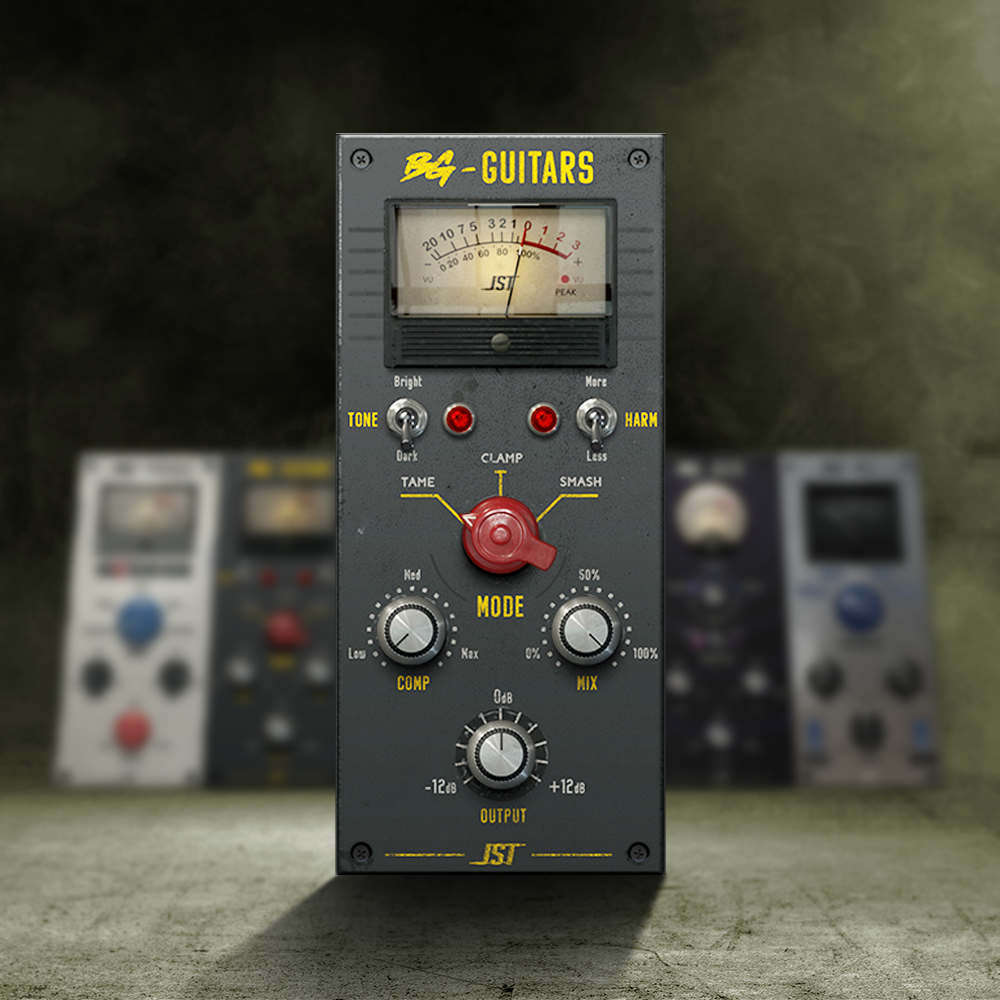
The Real Secret: It’s How You Use the Tools
You can have all the best guitar plugins in the world, but the magic happens when you understand why and how to use them. The best producers don’t just pick presets. They know why they’re choosing a 5150 over a Rectifier for a specific song. They know which SM57/R121 IR blend will give them the perfect texture. They know exactly where to cut the EQ to make the guitar sit perfectly with the kick and bass.
These plugins are the tools, but technique and knowledge are what build the house. Watching a pro dial in a tone from a raw DI, explaining every choice they make, is a completely different level of learning. It’s seeing the theory put into practice in real-time.
Gojira on Nail The Mix
Logan Mader mixes "Toxic Garbage Island" Get the SessionIf you’re ready to see how producers for bands like Gojira, Periphery, and Meshuggah go beyond presets and build massive metal tones from the ground up, check out what you get with a Nail The Mix membership. You’ll get the raw multitracks from real songs and watch the original producers mix them from scratch, showing you every plugin, setting, and decision along the way.
Get a new set of multi-tracks every month from a world-class artist, a livestream with the producer who mixed it, 100+ tutorials, our exclusive plugins and more
Get Started for $1
